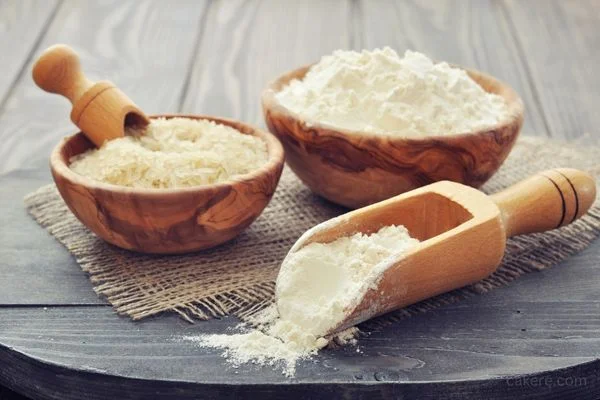If you’re looking for a gluten-free alternative to wheat flour, rice flour may be the perfect solution. Made from finely milled rice grains, this versatile flour offers a range of benefits for baking, from improved texture and flavor to enhanced nutrition.
In this article, we’ll explore what rice flour does in baking and how you can use it to create delicious gluten-free treats.

What Does Rice Flour Do in Baking?
- Provides Structure and Texture Rice flour contains a high amount of starch, which helps to provide structure and texture to baked goods. Unlike wheat flour, which contains gluten, rice flour is gluten-free, making it an excellent choice for those with celiac disease or gluten intolerance. The lack of gluten in rice flour can result in a crumbly texture, but it can be easily compensated for by combining it with other gluten-free flours or using additional binding agents.
- Enhances Flavor Rice flour has a mild, slightly sweet flavor that can enhance the taste of baked goods. It is often used in combination with other gluten-free flours, such as almond flour or coconut flour, to create a more complex flavor profile.
- Absorbs Moisture Rice flour has a unique ability to absorb moisture, making it an excellent thickening agent. When added to sauces, gravies, or soups, it can help to create a smooth, silky texture.
- Increases Nutritional Value Rice flour is a good source of vitamins and minerals, such as iron, niacin, and thiamin. By incorporating rice flour into your baked goods, you can boost their nutritional value without sacrificing taste or texture.
How to Use Rice Flour in Baking
Rice flour can be used in a variety of ways in baking, depending on the recipe and desired outcome. Here are some tips for using rice flour:
- Use a blend of gluten-free flours: To achieve a more balanced texture and flavor, use a combination of rice flour, almond flour, coconut flour, or other gluten-free flours in your baking.
- Add binding agents: To compensate for the lack of gluten, add binding agents such as xanthan gum, guar gum, or psyllium husk powder to your recipes. These ingredients help to hold the ingredients together and create a more cohesive texture.
- Adjust the liquid: Rice flour absorbs more liquid than wheat flour, so adjust the amount of liquid in your recipe accordingly. Start by using slightly less liquid than you would with wheat flour and gradually add more until you reach the desired consistency.
FAQs
Rice flour can be substituted for wheat flour in many recipes, but it’s important to note that the texture and flavor may be different. You may need to adjust the recipe to compensate for the lack of gluten in rice flour.
Rice flour offers some nutritional benefits, such as being a good source of vitamins and minerals, but it’s not necessarily healthier than wheat flour. Both flours have their own unique properties and can be part of a healthy, balanced diet.
Conclusion
What does rice flour do in baking? Rice flour provides structure, texture, and flavor to gluten-free baked goods. Its ability to absorb moisture and increase nutritional value make it a versatile and valuable ingredient in the kitchen. By understanding the properties and uses of rice flour, you can create delicious gluten-free treats that rival their wheat-based counterparts.
